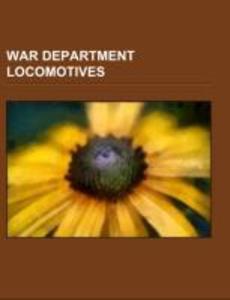
Zustellung: Fr, 23.05. - Di, 27.05.
Versand in 3 Tagen
VersandkostenfreiBestellen & in Filiale abholen:
Source: Wikipedia. Pages: 23. Chapters: British Rail Class D3/6, British Rail Class D3/7, GER Class C72, GER Class R24, GER Class S56, GWR 2301 Class, Hunslet Austerity 0-6-0ST, LB&SCR I2 class, List of preserved Hunslet Austerity 0-6-0ST locomotives, LMS diesel shunters 7059-7068, LMS diesel shunter 7050, LMS diesel shunter 7051, LMS diesel shunter 7052, LMS diesel shunter 7053, LMS diesel shunter 7054, LMS diesel shunter 7057, LMS diesel shunter 7058, LMS Stanier Class 8F, USATC S200 Class, WD Austerity 2-10-0, WD Austerity 2-8-0, WD ex-LMS Fowler Class 3F. Excerpt: This table details the steam locomotives of the Hunslet Austerity 0-6-0ST class that have been preserved on heritage railways. Of the 485 'Austerities' constructed, around 70 have survived into preservation. Although the Hunslet Engine Company were responsible for the design, not all of these locomotives were built by the company. In order to meet wartime demand, Hunslet subcontracted some of the construction to Andrew Barclay Sons & Co., W. G. Bagnall, Hudswell Clarke, Robert Stephenson and Hawthorns and the Vulcan Foundry. Several have been painted as LNER Class J94s to represent mainline rather than industrial use. Not all have survived intact; the boiler of RSH 7135 of 1944 was used on the replica Broad gauge locomotive "Iron Duke" built in 1985. At least one has been turned into a Thomas the Tank Engine look-a-like, and another into one of Douglas, also from The Railway Series. The Scottish Railway Preservation Society have formed an Austerity Locomotive Owners Association (A.L.O.A.) with the aim of being a central point for owners of Austerity locomotives to share information and assistance. The London Midland and Scottish Railway's 8F class 2-8-0 heavy freight locomotive is a class of steam locomotive designed for hauling heavy freight. 852 were built between 1935 and 1946 (not all to LMS order), as a freight version of William Stanier's successful Black Five, and the class saw service overseas during the Second World War. LMS freight traction suffered from the adoption of the Midland Railway's small engine policy which had left it with trains double-headed by underpowered 0-6-0s supplemented by inadequate Garratts and Fowler 7F 0-8-0s. The 8F design incorporated the two-cylinder arrangement of the Black Fives. They were initially classified 7F, but this was later changed to the more familiar 8F. On the outbreak of the Second World War, the design was chosen to become the country's standard freight design, reprising the role the GCR Class 8K had in the First
Produktdetails
Erscheinungsdatum
13. Oktober 2014
Sprache
englisch
Seitenanzahl
24
Herausgegeben von
Source: Wikipedia
Verlag/Hersteller
Produktart
kartoniert
Gewicht
70 g
Größe (L/B/H)
246/189/2 mm
Sonstiges
Paperback
ISBN
9781156673300
Entdecken Sie mehr
Bewertungen
0 Bewertungen
Es wurden noch keine Bewertungen abgegeben. Schreiben Sie die erste Bewertung zu "War Department locomotives" und helfen Sie damit anderen bei der Kaufentscheidung.










